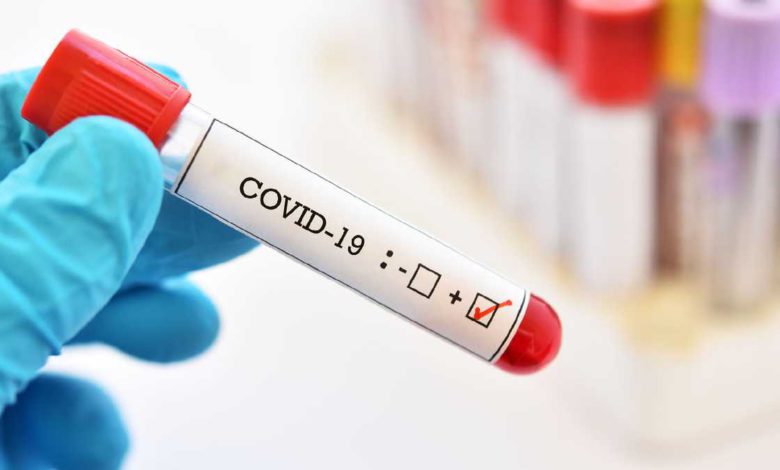

Ohio doctors are holding their breath as vaccinations start to stall out.They said Tuesday the dangerous delta variant is gathering more steam, so they are watching what they called a troubling trend that could carry the pandemic into the fall and winter months.The Centers for Disease Control and Prevention warned about it Tuesday Rochelle Walensky, the director, said, "The delta variant now represents 83% of sequenced cases. This is a dramatic increase from, up from 50% the week of July 3rd. In some parts of the country, the percentage is even higher, particularly in areas of low vaccination rates."Just since last night, hospitalizations in the Cincinnati region spiked 20%.Kate Schroder of the Health Collaborative said, "35% of the cases in Ohio are driven by the delta variant."But those figures were three weeks old, so she fully expected a much higher percentage now."Probably the majority of cases," she said.Currently, southwest Ohio is vaccinating roughly 600 people a day. Medical doctors said they understood how people are riding a wave of COVID burnout at concerts, ball games and gatherings despite what is fast becoming a variant-fueled pandemic."There will be a fourth wave," said Dr. Carl Fichtenbaum of the University of Cincinnati College of Medicine. "The question is how big will it be?"Dr. Robert Frenck, who conducts clinical trials at Cincinnati Children's Medical Center, advised those who are reluctant to get the shot to think of it this way: you are at war with your daily environment, exposed to viruses and bacteria.So, he said when a vaccine starts killing off a virus, "then the virus changes, it mutates because that's the way it can then continue."That's what delta is doing.Just as in a ball game, it is adjusting to the defense. It matters not if you're rural, urban, male, female, black, white, whatever. The variant is an equal opportunity danger that is simply looking for a host."And the best way we have to keep the virus from finding people to infect is to have immunity through vaccination," Frenck said.For the moment, Ohio is better off than bordering states like Kentucky and Michigan. But with fewer vaccinations and more hospitalizations, the concern about delta increases as the school year approaches.Dr. Fichtenbaum said the question of whether to vaccinate or not vaccinate children will likely leave parents drawing very strong battle lines.Medical experts believe delta is 50% more efficient at passing from person to person and that it can make youth sicker and leave one out of every three with chronic symptoms like brain fog and heart disease.We're told the clinical trials for children under twelve could produce a vaccine by December. They're using lower doses and getting good results."We're getting the same immune response using about one-third of the amount of vaccine that we're needing in even young adults," Frenck said. "So, I would say that's very encouraging."According to local doctors, 99% of the deaths in recent months have been people who were unvaccinated. The same for 97% of the hospitalizations.Right now, we benefit from the airy summer weather, which will give way to fall, flu season and more indoor activity in a couple of months. "It's going to be even harder to protect ourselves," Schroder said. "So, this really is the moment to make a difference and to continue to push up our community vaccination rate."
Ohio doctors are holding their breath as vaccinations start to stall out.
They said Tuesday the dangerous delta variant is gathering more steam, so they are watching what they called a troubling trend that could carry the pandemic into the fall and winter months.
The Centers for Disease Control and Prevention warned about it Tuesday
Rochelle Walensky, the director, said, "The delta variant now represents 83% of sequenced cases. This is a dramatic increase from, up from 50% the week of July 3rd. In some parts of the country, the percentage is even higher, particularly in areas of low vaccination rates."
Just since last night, hospitalizations in the Cincinnati region spiked 20%.
Kate Schroder of the Health Collaborative said, "35% of the cases in Ohio are driven by the delta variant."
But those figures were three weeks old, so she fully expected a much higher percentage now.
"Probably the majority of cases," she said.
Currently, southwest Ohio is vaccinating roughly 600 people a day. Medical doctors said they understood how people are riding a wave of COVID burnout at concerts, ball games and gatherings despite what is fast becoming a variant-fueled pandemic.
"There will be a fourth wave," said Dr. Carl Fichtenbaum of the University of Cincinnati College of Medicine. "The question is how big will it be?"
Dr. Robert Frenck, who conducts clinical trials at Cincinnati Children's Medical Center, advised those who are reluctant to get the shot to think of it this way: you are at war with your daily environment, exposed to viruses and bacteria.
So, he said when a vaccine starts killing off a virus, "then the virus changes, it mutates because that's the way it can then continue."
That's what delta is doing.
Just as in a ball game, it is adjusting to the defense. It matters not if you're rural, urban, male, female, black, white, whatever.
The variant is an equal opportunity danger that is simply looking for a host.
"And the best way we have to keep the virus from finding people to infect is to have immunity through vaccination," Frenck said.
For the moment, Ohio is better off than bordering states like Kentucky and Michigan. But with fewer vaccinations and more hospitalizations, the concern about delta increases as the school year approaches.
Dr. Fichtenbaum said the question of whether to vaccinate or not vaccinate children will likely leave parents drawing very strong battle lines.
Medical experts believe delta is 50% more efficient at passing from person to person and that it can make youth sicker and leave one out of every three with chronic symptoms like brain fog and heart disease.
We're told the clinical trials for children under twelve could produce a vaccine by December. They're using lower doses and getting good results.
"We're getting the same immune response using about one-third of the amount of vaccine that we're needing in even young adults," Frenck said. "So, I would say that's very encouraging."
According to local doctors, 99% of the deaths in recent months have been people who were unvaccinated. The same for 97% of the hospitalizations.
Right now, we benefit from the airy summer weather, which will give way to fall, flu season and more indoor activity in a couple of months.
"It's going to be even harder to protect ourselves," Schroder said. "So, this really is the moment to make a difference and to continue to push up our community vaccination rate."
Source link








